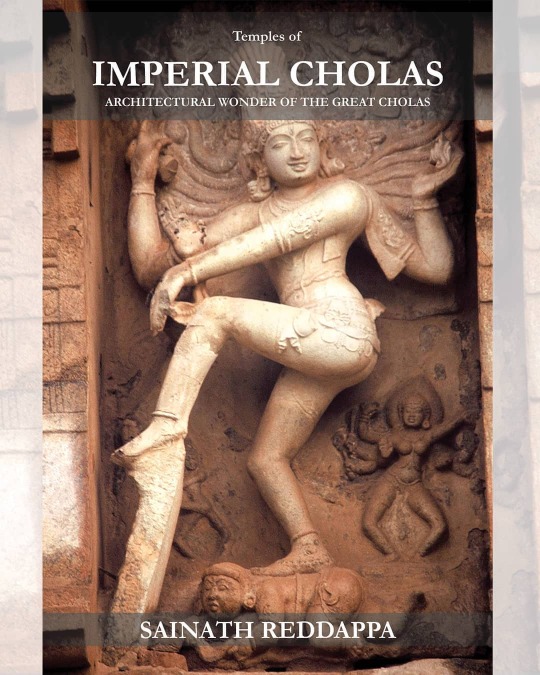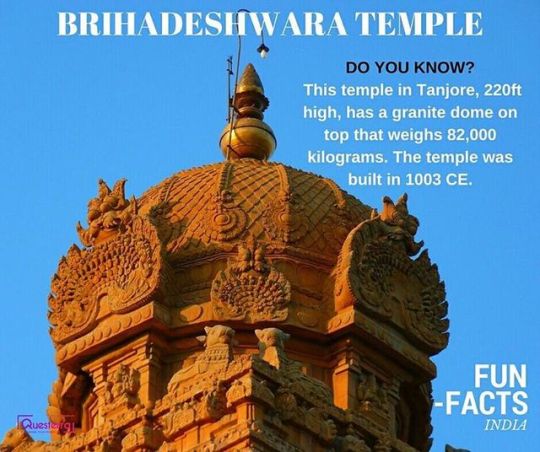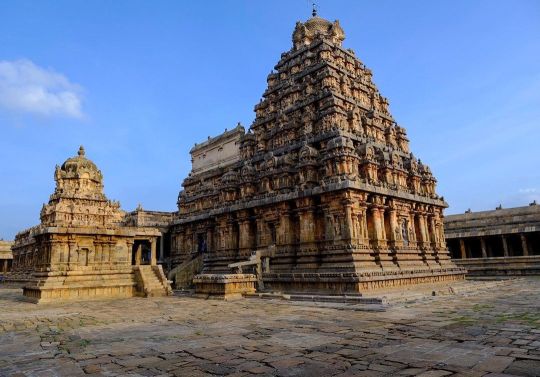#cholaarchitecture
Photo

#temple #southindia #chola #kumbakonam #architecture #cholaarchitecture #dravidian #culture #civilization #history #heritage #hinduism #hindu #ancient #trending #photoofday #wonder #figure #templechariot #colourful (at Kumbakonam) https://www.instagram.com/p/CkUU5FZyfc8/?igshid=NGJjMDIxMWI=
#temple#southindia#chola#kumbakonam#architecture#cholaarchitecture#dravidian#culture#civilization#history#heritage#hinduism#hindu#ancient#trending#photoofday#wonder#figure#templechariot#colourful
7 notes
·
View notes
Photo

Varadharaja Perumal Temple, Kancheepuram is a photographer’s delight and my favourite spot for photography. It has got fantastic 3rd century Dravidian temple architecture built by Chola kings and later by Nayaks of Thanjavur. You need to spend at least a day to enjoy and shoot some aesthetic photos. One of the few well maintained and clean temples I had visited. I tried this unusual composition by including the dragon-like lion sculpture in the foreground. My wide angle lens 35mm gave a greater feel of perspective and depth of field. The inclusion of the main gopurams, flag post and other important structures behind the bold foreground sculpture makes this shot look different and interesting. Bottom line: Avoid showing empty foregrounds particularly while shooting temples and buildings, instead include something interesting to fill. Avoid routine and boring compositions to make your picture stand out. Learn to see the world around series Learn the Art of seeing. Call 9444441190 for more details. Join my classes & webinars to take your photography to the next level. Watch ‘KLR the photo guru’ my YouTube channel for more tutorials on photography. #chola #cholaarchitecture #varadharajaperumaltemple #templesofindia #templesoftamilnadu #perumal #kancheepuram #kanchipuram #templearchitecture #templephotography #klrajaponsing #klrthephotoguru #learnphotographyfromklr #ambitions #photographyacademy #Ambitions4Photographyacademy #photographytipsandtricks #traveltheworld #spiritualtravel (at Varadharaja Perumal Temple) https://www.instagram.com/p/CSZly1dp-t4/?utm_medium=tumblr
#chola#cholaarchitecture#varadharajaperumaltemple#templesofindia#templesoftamilnadu#perumal#kancheepuram#kanchipuram#templearchitecture#templephotography#klrajaponsing#klrthephotoguru#learnphotographyfromklr#ambitions#photographyacademy#ambitions4photographyacademy#photographytipsandtricks#traveltheworld#spiritualtravel
0 notes
Photo

Temples of Imperial Cholas: Architectural Wonders of the great Cholas Available on Kindle https://www.amazon.com/Temples-Imperial-Cholas-Architectural-Wonders-ebook/dp/B08D8KPCFM #imperialcholas #BrihadeeswararTemple #AiravatesvaraTemple #kampaharesvaratemple #thanjavurtemple #thanjavurbigtemple #gangaikondacholapuram #cholaarchitecture #cholahistory #templearchitecture #india #architecture #templesofindia #indiantemples #photography #architecturephotography #incredibleindia #indianarchitecture #templephotography #hindutemple #travelphotography #temples #travel #karnataka #ancienttemple #hinduism #ancientarchitecture #visitindia #history #travelgram https://www.instagram.com/p/CEJux8qnzHGuFITL2_pc_uISpUdrJgSrrtLGCM0/?igshid=q3rcrxxek1cp
#imperialcholas#brihadeeswarartemple#airavatesvaratemple#kampaharesvaratemple#thanjavurtemple#thanjavurbigtemple#gangaikondacholapuram#cholaarchitecture#cholahistory#templearchitecture#india#architecture#templesofindia#indiantemples#photography#architecturephotography#incredibleindia#indianarchitecture#templephotography#hindutemple#travelphotography#temples#travel#karnataka#ancienttemple#hinduism#ancientarchitecture#visitindia#history#travelgram
0 notes
Photo

🤴 King Chola is one of the Three Crowned Kings of Tamilakam, along with the Chera and Pandya, 🤴 The dynasty continued to govern over varying territory until the 13th century CE. 🤴 The heartland of the Cholas was the fertile valley of the Kaveri River, but they ruled a significantly larger area at the height of their power from the later half of the 9th century till the beginning of the 13th century. 🤴 During the reign of Rajaraja Chola I and his successors Rajendra Chola I, Virarajendra Chola and Kulothunga Chola I the Chola armies invaded Sri Lanka, the Maldives and parts of Southeast Asia like Malaysia, Indonesia and Southern Thailand of the Srivijaya Empire. 🤴 He has the habit of building temple whenever he captures a country. 🤴 He love Architecture. #learnlikeanarchitect #neramclasses . . . . . . . . #learnarchitecture #architecture #nata #jee #jeemains2020 #jeepaper2 #arch #archstudent #architecturestudent #history #historylover #historyofarchitecture #dravidian #dravidianarchitecture #chola #cholaarchitecture #rajarajacholanthe great #brihadeeswarartemple #tamilnadutemples #archistudent #nataaptitudetest (at India) https://www.instagram.com/p/CCHCaDMAP75/?igshid=1qoobmgooivop
#learnlikeanarchitect#neramclasses#learnarchitecture#architecture#nata#jee#jeemains2020#jeepaper2#arch#archstudent#architecturestudent#history#historylover#historyofarchitecture#dravidian#dravidianarchitecture#chola#cholaarchitecture#rajarajacholanthe#brihadeeswarartemple#tamilnadutemples#archistudent#nataaptitudetest
0 notes
Photo

The grandeur of the Thillai Natarajar Temple, chidambaram. எழில்மிகு தில்லை நடராஜர் கோவில் கோபுரம். #cholaarchitecture #thillainatarajatemple (at Thillai Nataraja Temple, Chidambaram) https://www.instagram.com/p/BsIglb-nMur/?utm_source=ig_tumblr_share&igshid=69fa49b8yeb8
0 notes
Photo

How did the Cholas manage to build this? Fascinating...⠀ #incredibleindia #indianarchitecture #ancientindianarchitecture #cholaarchitecture
0 notes
Photo

#temple #southindia #chola #kumbakonam #architecture #cholaarchitecture #dravidian #culture #civilization #history #heritage #hinduism #hindu #ancient #trending #photoofday #elephant #granite (at Kumbakonam) https://www.instagram.com/p/CkUVgz3SVoX/?igshid=NGJjMDIxMWI=
#temple#southindia#chola#kumbakonam#architecture#cholaarchitecture#dravidian#culture#civilization#history#heritage#hinduism#hindu#ancient#trending#photoofday#elephant#granite
4 notes
·
View notes
Photo

#temple #southindia #chola #kumbakonam #architecture #cholaarchitecture #dravidian #culture #civilization #history #heritage #hinduism #hindu #ancient #trending #photoofday #winder #elephant #southindia #kumbakonamtemples #streetphotographers #streetphotographer #street #people #wonder https://www.instagram.com/p/CkUUkVTyiCE/?igshid=NGJjMDIxMWI=
#temple#southindia#chola#kumbakonam#architecture#cholaarchitecture#dravidian#culture#civilization#history#heritage#hinduism#hindu#ancient#trending#photoofday#winder#elephant#kumbakonamtemples#streetphotographers#streetphotographer#street#people#wonder
4 notes
·
View notes
Photo

#chola #cholaarchitecture #cholatemple #darasuram #kumbakonam #hindu #hinduism #wonder #ancient #wonder #heritage #hindutemple #fuji #xf1655 (at Darasuram-Airavateeswarar temple, Kumbakonam,Tamil Nadu) https://www.instagram.com/p/CkS-SRoSCZS/?igshid=NGJjMDIxMWI=
#chola#cholaarchitecture#cholatemple#darasuram#kumbakonam#hindu#hinduism#wonder#ancient#heritage#hindutemple#fuji#xf1655
1 note
·
View note
Photo

#temple #southindia #chola #kumbakonam #architecture #cholaarchitecture #dravidian #culture #civilization #history #heritage #hinduism #hindu #ancient #trending #photoofday #winder https://www.instagram.com/p/CkPGO3ESYci/?igshid=NGJjMDIxMWI=
#temple#southindia#chola#kumbakonam#architecture#cholaarchitecture#dravidian#culture#civilization#history#heritage#hinduism#hindu#ancient#trending#photoofday#winder
1 note
·
View note
Text
“When we recall the nature and extent of the efforts and sacrifices that must have gone into the construction of this magnificent temple… and the manner in which numerous villages all over the empire were linked with the daily routine of the temple… when we consider further, how all the learning and the arts that flourished in the country were impressed into the service of the temple, we cannot fail to observe how the Great Temple had come to hold, from its very inception, a prominent place in the polity of the land. The temple was meant to dominate Thanjavur as Thanjavur dominated the rest of South India at the time: it was indeed the masterpiece of Rajaraja’s rule.” ~ K. A. Nilkanta Sastri
The north facing wall of the Brihadeswara temple
Illustrative diagram of the main shrine showing the southern face (photo from Internet)
Subsidiary shrines at Brihadeswara temple. Photo from Internet
A little on the Chola Architecture
In South India the earliest temples were made by the Pallavas (7th -9th c. CE), and they developed certain typical characteristics of their own. The Cholas while keeping alive the Pallava features on monuments, made further improvisations and created an unique style of their own. So if we carefully observe, we will find that Chola niches are narrower than the early Pallava ones, while the carvings on the top of the niche appear rounder than the Pallavas (the image below: Chola on left and early Pallava on right). Similarly a closer look at the Pallava kudu shows the finial with a shovel-head (Mahabalipuram) while the Chola ones have a lion-head in their finials.
In the early Pallava rock-cut monuments, that we see in Mahabalipuram (the right image showing Durga on Draupadi ratha outer wall) the niche is wide, and the makara-torana design on the top is flat with the floral tail of the makara flowing out on two sides. Chola ones show niches (similar to the later Pallava ones) that are narrower, while the pattern on top is rounder. The pillar capital and pillar/pilaster differences are noteworthy too.
Another prominent difference that is noticed between the Chola and the Pallava monuments are in the size of their gopuras. The vimana in Pallava temples stand out prominently while the gopura is smaller and squatter (Kailashnathar temple). In Chola temples the vimana is colossal by the time of Rajaraja (example: Thanjavur, Gangaikondacholapuram, and Darasuram). While the gopuras in early Chola temples were relatively smaller (though not as squat as the Pallavas), in the late Chola period the gargantuan gopuras are bigger than even the main shrine vimana. The dwarapalas of the Pallavas are normal human figures with two arms, while the Cholas take their dwarapalas to another level altogether. Stern, four armed men, look down fiercely at the devotees as their fingers wonder and warn of the powers of the divinity inside.
On left is the normal human like figures as dwarapalas (Pallavas), while on the right is the Chola dwarapala at Thanjavur.
Brihadeswara Temple at Thanjavur: A Pictorial Journey
The Brihadisvara temple is dedicated to Shiva, and the sanctum holds a linga established by Rajaraja himself who named it as Rajarajesvaram- udayar. The Brihadeswara temple like all other large Chola temples have a flight of steps that lead from sides to a platform, from one enters the pillared mandapas and moves towards the sanctum. The temple balustrades are huge with ornamented outer sides, and curled up ends. The exterior walls show alternating koshtha-panjaras and kumbha panjaras, a typical Chola feature; while the niches show pilasters on two sides with a curved crown moulding decorated with two kudus having simha (lion) heads.
Alternating koshtha-panjaras (central one holds a niche with Skanda in it) and kumbha panjaras (with the pot like bases)
The niches on the southern wall of the temple holds Ganesha, Vishnu with his consorts, Sri/Lakshmi, a pair of dwarapalas, Bhikshatana, Virabhadra, two more dwarapalas, Dakshina-murti, Kalantaka, and Natesa. The north facing wall shows Ardhanarisvara, Gangadhara, two dwarapalas, Virabhadra, Alingana-murti, Shiva with a spear, two more dwarapalas, Saraswati, Mahishasuramardini and Bhairava. The west wall niches hold Hari-Hara, Ardhanarisvara, two dwarapalas, and two Chandrasekharas (one has a halo). The temple faces east and a flight of stairs lead to a pillared mandapa of a later period. A nandi manadapa, also of a later period, sits in the courtyard facing the main shrine, and in it sits a huge monolithic black nandi. The nandi mandapa shows colourful paintings on its ceilings which are of a much later period (late 19th to early 20th century) done by local artists.
The nandi mandapa in front with the huge monolithic Nandi sitting facing the sanctum
The temple’s large courtyard is surrounded by a pillared cloister attached to the prakara/wall. There are two Chola era gopuras at a distance from each other. As one enters he or she first crosses a gateway known the Maratha gate, which is a basic gateway, and as the name suggests, built later by the Marathas. The next gate is the first of the Chola built structure and is larger in size. After crossing it one sees the second Chola era gopura guarded by two huge dwarapalas, with beautiful carvings that show stories of Shiva’s marriage, Markandeya episode, Arjuna getting the Pashupata weapon, etc. A moat, now empty, surrounds the temple complex.
Right in front is the small Maratha gate, built at much later period by the Marathas. Beyond it rises the tall head of the first Chola gopuram.
The dry moat around the temple
An old photo from the British library archives shows how it appeared when the moat was filled with water, circa 1880s.
The first Chola gateway/gopura known as Keralantakan tiruvasal
The second Chola gopura known as Rajarajan tiruvasal with its two large dwarapalas on either side of the door
The pillared cloister that runs all round the coutryard
108 Shiva-lingas inside the cloister
Nagas inside the cloister
Lingodbhava. Some of these images/icons were shown as subsidiary to the temple architecture, and they were carved simply, on plain walls and with less ornamentation. Chola sculpture can be divided into three main types: decorative, icons, and portraits. Besides the three, there are also the huge dwarapalas, panels with birds and animals, musicians, dancers, and depictions of stories from our Epics and the Puranas.
Seen here is the vimana of the Chandikesvara shrine on the northern side
Beautiful walls and vimana of the Subrahmanya shrine, which was built much later during the Nayaka period (17th century). The temple has exquisite carvings.
An exquisitely carved pranala and tank by the side of the Subrahmanya shrine
Balustrade on the Subrahmanya shrine showing an elephant picking up an enemy soldier from his horse. On the other side of the balustrade the elephant is seen throwing down the body of the soldier after killing him.
Dwarapala guarding the southern entrance, showing tarjani (warning) and vismaya (wonder) mudras. Seen in front are inscriptions on plinth that go around the temple.
Inscription that tell us that Raja Raja Chola, gifted a gold-covered finial which was placed on top of the main vimana. It was on the two hundred and seventy-fifth day of the twenty-fifth year of his reign (1010). (Photo from internet)
Totally it is said that the temple holds 64 inscriptions by Rajaraja; 29 by Rajendra I; one each by Rajendradeva, Kulottunga I, and Vikrama Chola; 3 by a Pandyan ruler; 2 by Vijayanagara kings; 10 by Maratha rulers; two by the Nayakas. The Maratha inscriptions were by Sarafoji II, where one inscription states that the the king arranged for purification and reconsecration ceremonies of the temple in 1801-02; while adding mandapas; repairing several damaged shrines; renovating the temple wall, kitchen, and courtyard flooring (data from ASI reports)
Shiva
Bhikshatana
Nataraja on southern side of the main vimana
Kalantaka on southern wall
Vishnu and Ganesha on southern wall
Saraswati on southern entrance
Miniature panel showing Durga fighting the two asuras, Shumbha and Nisumbha
Miniature panel showing Subrahmanya/Skanda/Kartikeya
Karuvar devta shrine, built at a later period (likely a Maratha era structure)
Beautiful pillars of the Amman shrine, which was built during the time by the Pandyas, in the 13th century
View of the Brihadesvara temple from Nandi mandapa
A rider on horse on pillar in the nandi mandapa
Stairs leading to the front mandapa
The masterpiece of Chola art is seen in this temple in the incomplete carvings of 81 of the 108 fine karanas of natya shastra on the corridor walls (temple’s first floor). The dark passage that goes around the sanctum also holds another secret in the form of three huge sculptures of Shiva. This passage ceilings and walls also hold exquisite Chola era paintings which had been covered over by 17th century Nayaka era paintings. The original paintings have now been restored afte extensive works undertaken by the ASI from the 2000s.
Shiva in of the 81 dance positions carved on the outer wall of the upper storey corridor wall
A mural of Rajaraja I and his guru.
Brihadeswara temple in Thanjavur with its awe inspiring architecture, paintings, and sculptures, epitomizes the might and grandeur of the Chola era. The temple is huge and the entire complex will take at least one whole day (if not a day more) for a thorough look at everything. It would be prudent to stay in Thanjavur for a few days and explore the three jewels of the Chola temple architecture at one’s own leisure : Brihadeswara temples at Thanjavur and Gangaikondacholapuram, and Airavatesvara temple at Darasuram. The best time to visit this place is during November to January, when weather is relatively cooler. The temple sanctum remains closed from 12 pm to 4 pm, and one must keep that in mind while visiting the temple.
References:
George Michell, 2008. Architecture and art of Southern India. Cambridge University Press. PDF
S. R. Balasubrahmanyam, 1975. Middle Chola Temples. Thomson Press, Bombay.
e-book
Brihadesvara Temple in Thanjavur – an architectural marvel by the dynamic Raja Raja Chola I "When we recall the nature and extent of the efforts and sacrifices that must have gone into the construction of this magnificent temple...
#art#brihadesvara#brihadeswara#chola#cholaarchitecture#cholaart#cholatemples#culture#dance#explorer#festivals#hinduism#history#india#media#painting#people#photography#rajarajachola#religion#tamil nadu#tanjore#tea#thanjavur#tourism#travel#worship#writer
0 notes